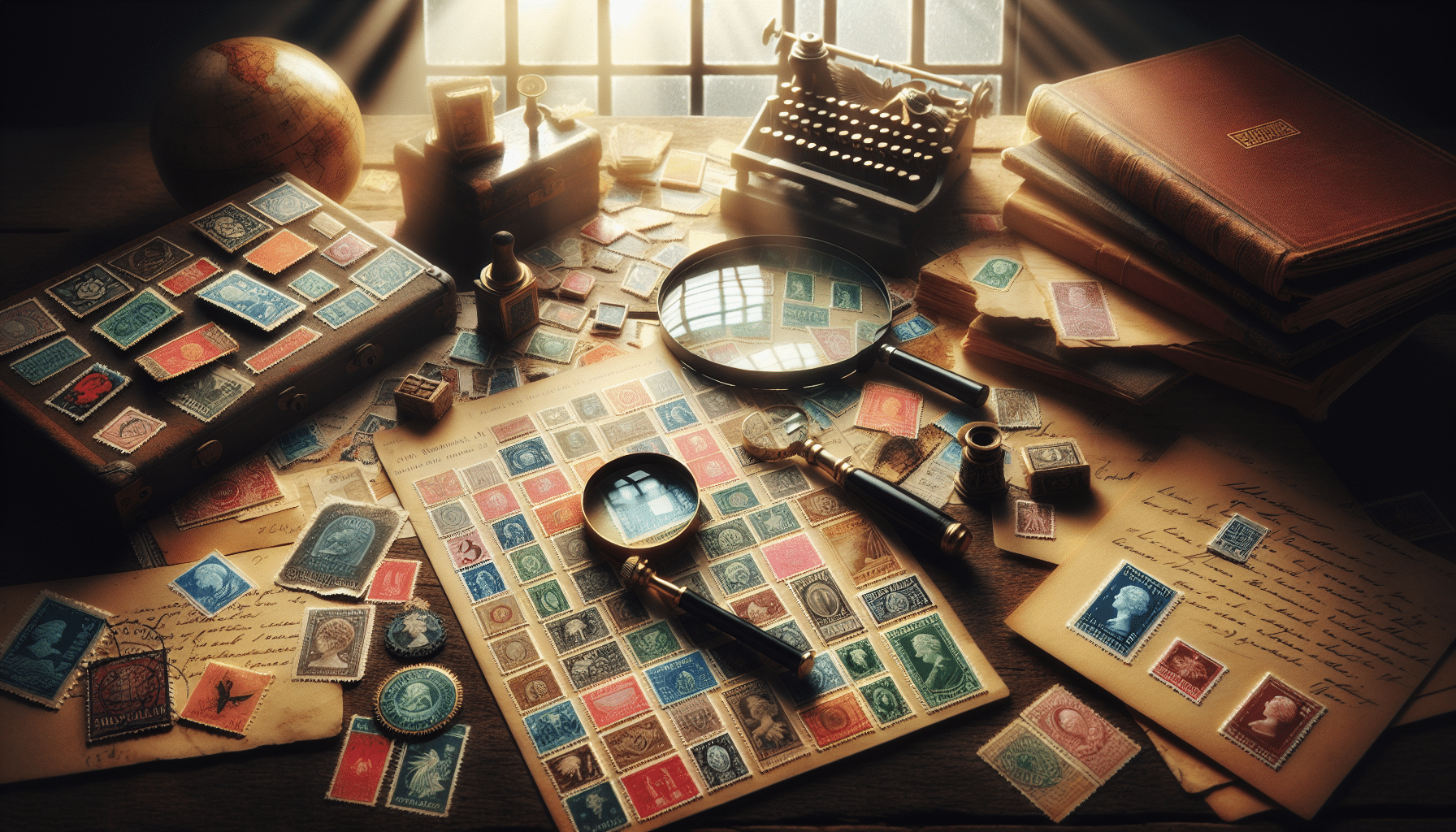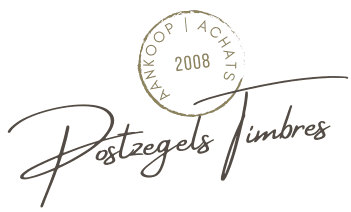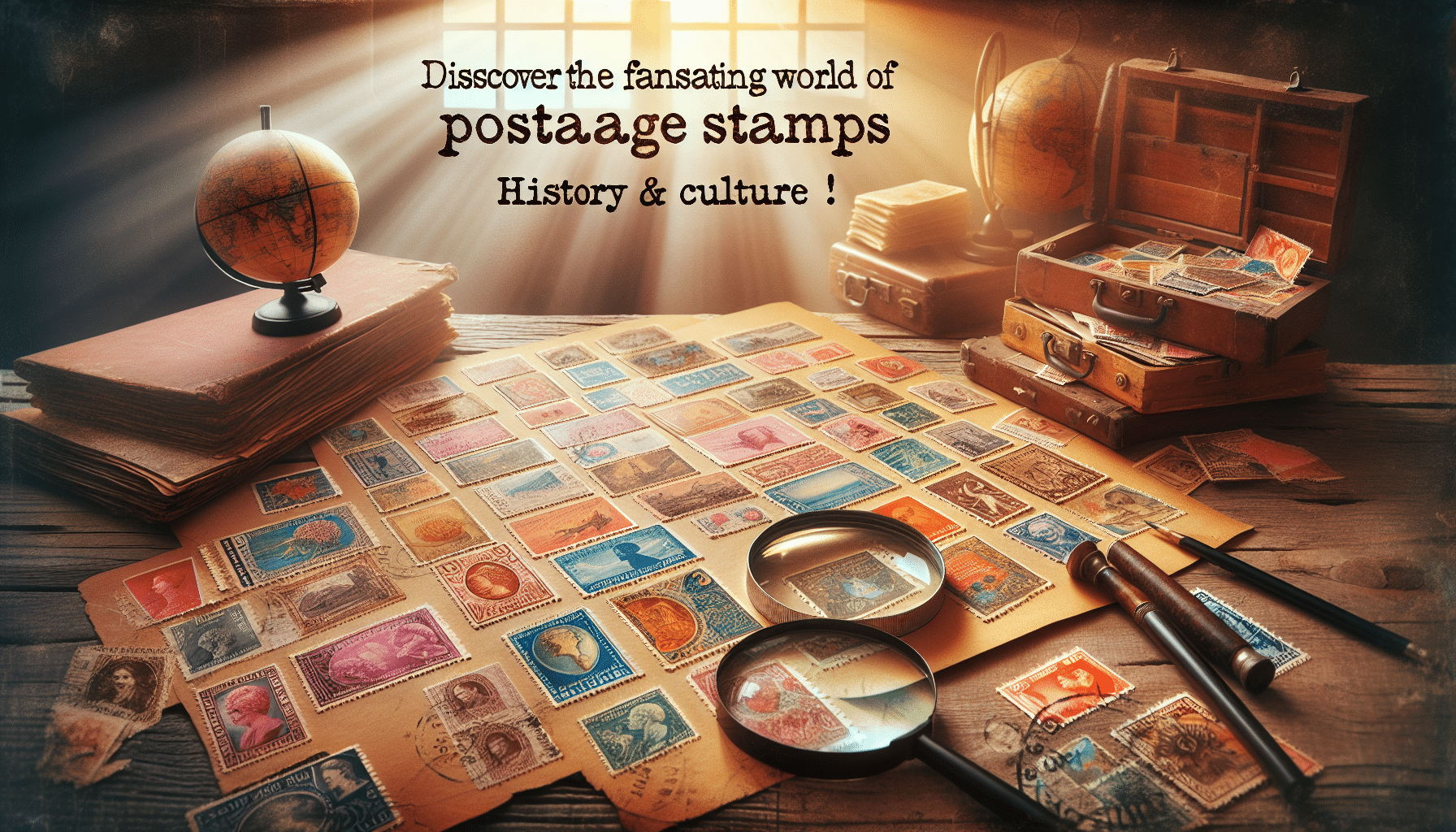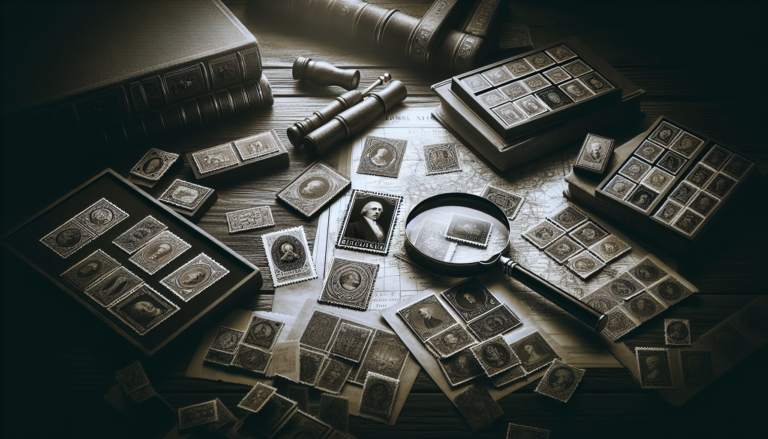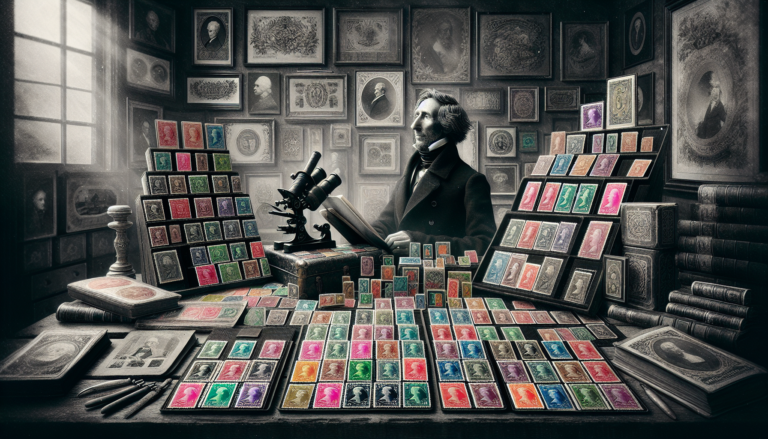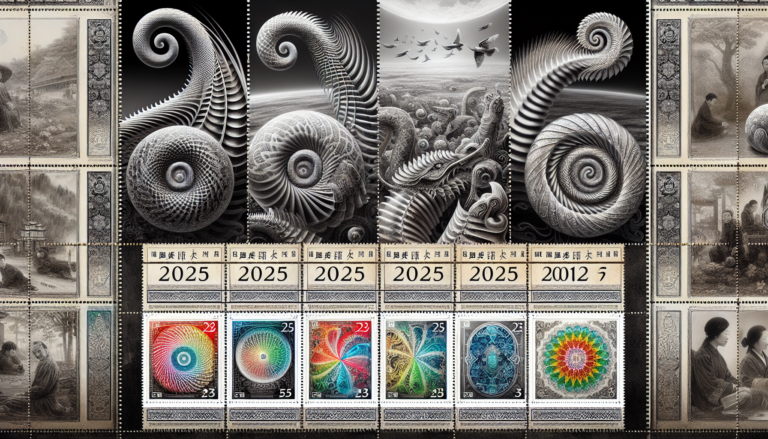Welcome to the fascinating universe of postage stamps ! 🥳 Prepare to travel through time and space, while sitting comfortably in your sofa. Yes, you heard; This little colorful vignette that you find in your mailbox contains incredible stories. Imagine postage stamps as passports for travel through history. Each stamp is a small messenger, a silent hero, ready to tell you about the stories of past civilizations.
In fact, the history of postage stamps is not trivial. It began in the 19th century, in the United Kingdom, with a certain Rowland Hill who decided that it was time to change the postal world; It's like a superhero of the expedition had emerged, isn't it? And who said that history and culture could not be both serious and funny? Pierre Moreau, that's the name, but you can call me "Expert Philatellie stamp"!
Let's dive together in this colorful world where each postage stamp is a work of art, and perhaps even a good subject of conversation during your next meetings. Take your flight; The adventure begins now! 🚀 In this article, we will make you discover the introduction to the world of postage stamps . Do not forget that the introduction to the world of postage stamps is a door to an endless passion.
- Origins : the first postage stamp, Le Penny Black , issued in 1840 to the United Kingdom.
- Postal system revolution : Passage of payment of shipping costs to the sender instead of the recipient.
- Cultural evolution : Stamps over time reflect historical events and figures.
- Collection phenomenon : philately , a captivating hobby for millions of enthusiasts around the world.
- Maintenance events : Each timbre emitted tells a unique story representing its time.
- Edition and art : Artistic creation of stamps, mixing design and cultural message.
- Economic impact : collectors contribute to the economy by valuing and escaping rare stamps.
- International bridges : stamps as symbols of intercultural and diplomacy exchanges.
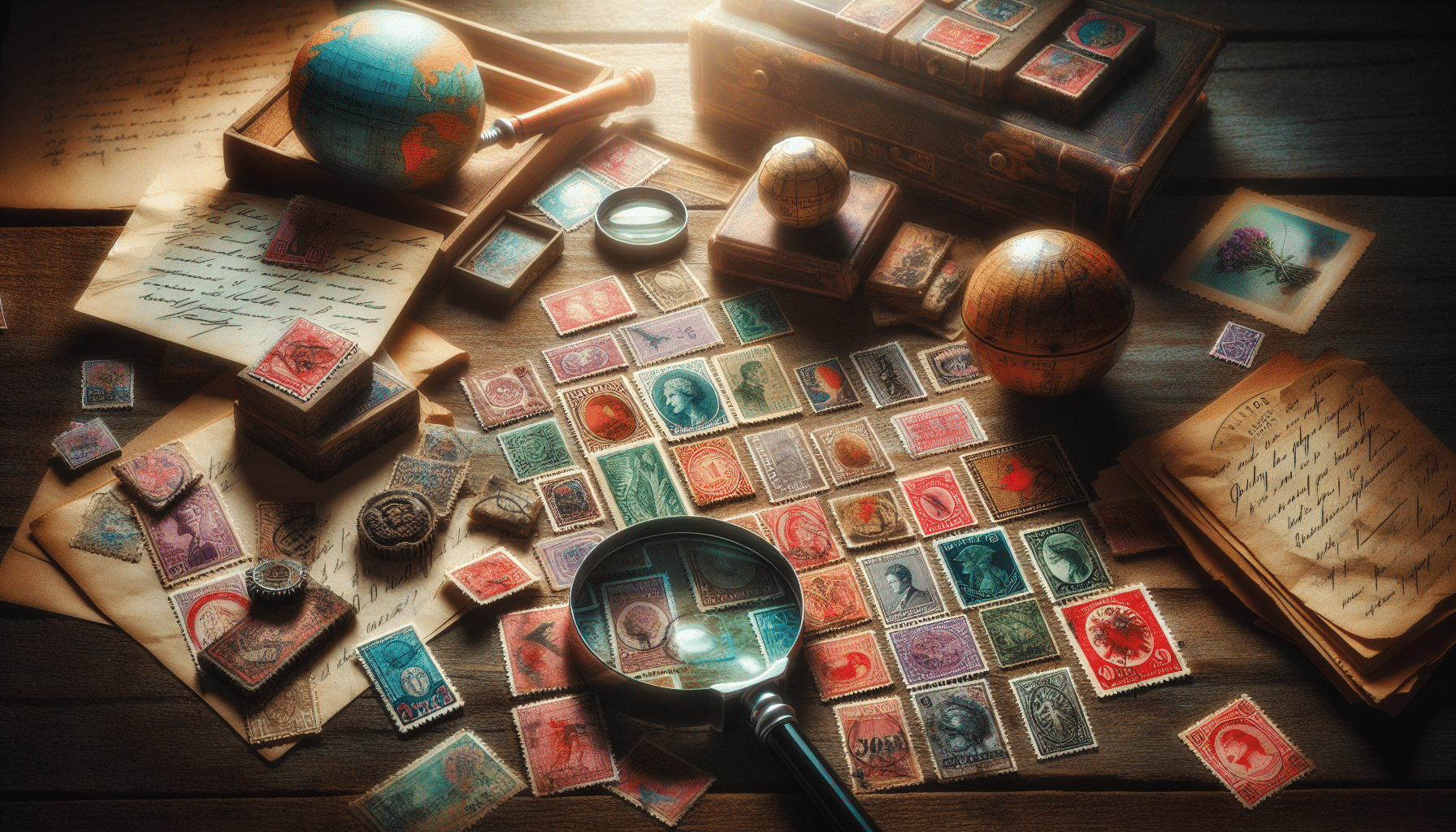
Welcome to the fascinating universe of postage stamps ! 🕵️♂️ You could say that these small vignettes are like windows on time. You know, a stamp is a bit like a selfie from a country at a given time, representing its culture, its history and sometimes even its sense of humor. 😄
Indeed, the introduction to the world of postage stamps will allow you to explore new facets of this exciting passion. Each stamp has its history, making each discovery for a unique moment. Discover how the introduction to the world of postage stamps can enrich your understanding of different cultures.
In this introduction to the world of postage stamps , you will see how each stamp is a window open to the history of countries and civilizations. Remember, the introduction to the world of postage stamps is not only a subject of interest, it is a journey in time!
The beginnings of the philatelic adventure
Let's go a little further in history, do you want? It all started in 1840 with Le Penny Black , the very first postage stamp in the world! 🎉 Emitted in the United Kingdom, he marked a turning point in postal traffic. Before, the recipient paid shipping costs, which was not always very nice. Imagine that you receive a letter from a friend and that you have to pay to receive it ... Ouch! 💸
So, Rowland Hill, the hero of the story, thought: "What if I made the sender pay rather?" It was a bit as if the earth had decided to reverse the roles in a play! And this is how philatelie was born, orchestrating symphonies of mail around the world. 🎶
Culture at the end of the stamp
The postage stamps are much more than simple pieces of paper. Each stamp tells a story. For example, a stamp can pay tribute to a local hero, illustrate an emblematic landscape or celebrate a national holiday. You could even say that they are the little ambassadors of their country! 🌍
When you look at a stamp, you are like an explorer in front of a treasure card. Each detail, each color is important. Did you know that some stamps show endangered animals? This sensitizes the cause while embellishing the envelope! Why not get into the collection of stamps with a theme? It is a nice way to discover different cultures: the “art” of postage stamps intertwines with the history and various subjects. 🎨
The main stages of stamp evolution
The postage stamps are not content to travel, they also tell you the introduction to the world of postage stamps through the ages. Each stamp that you collect is an invitation to explore more.
Perhaps you wonder how the postage stamps have evolved over the centuries? 🤔 Well, here is a little trip back in time! At the start, the stamps were made by hand, each impression was unique, a bit like a chef who prepares his dish with love. 🍳 Thanks to industrialization, production has become faster, allowing variations in design and themes.
Over the years, the postage stamp has evolved and adapted: holograms, barcod stamps, and even electronic stamps! It is a real technological adventure. Who would have thought a simple piece of paper could have so many faces? 😲
Philately, a hobby like no other
If you want to immerse yourself in the world of philatelie , here is an original tip: starts by exchanging stamps with friends or participates in collector fairs. It's a bit like a treasure hunt, but instead of looking for jewelry, you are looking for these little paper wonders! 🏴☠️
And don't forget, each collection is unique. Assist yourself with your friends, watch your finds and make it a friendly moment. It's like a pajama evening, but with postage stamps! 😄
How to protect your collection
It is crucial to protect your treasures well, right? A little tip to remember: uses special stamp albums or plastic pockets to prevent your works of art from being damaged. 🖼️ And if you really want to pamper your collection, find out about suitable insurance. You can discover interesting advice here: protect your stamps . Do not leave a little hook to ruin your masterpiece! ⚠️
In short, the introduction to the world of postage stamps is a real invitation to explore history and culture. All this reminds me that sometimes the best stories are those that we discover through the stamps. You can say that sibling the story in small vignettes, it's a bit like looking for pieces of stars in the sky! 🌌
So, ready to immerse yourself even more? With this introduction to the world of postage stamps , you will discover the art of collecting and the cultural importance of these small works of art. Do not forget that each postage stamp is a play in world history. Welcome to the introduction to the world of postage stamps !
So who knows, maybe your collection of stamps will lead you to become the next great philatelic explorer? 🚀
🕰️ Introduction to the world of postage stamps: History and culture
| Marking event | Concise description |
| 📅 1840 - Penny Black program | First postage stamp to the world, changing the postal system with preparation by the sender. |
| 🌍 International evolution | Stamps have become a reflection of national cultures and identities around the world. |
| 💌 An emotional bond | Each stamp tells a story, conveying emotions and memories through letters. |
| 📦 Philately | An exciting hobby that combines historical research, aesthetic and cultural curiosity. |
| 📜 Various themes | Stamps tackle various subjects, from nature to famous personalities, enriching the collection. |
A fascinating dive in the universe of postage stamps
Welcome to the world of postage stamps! 😊 You know, these little vignettes which may seem insignificant but hide a rich story like a good old adventure film. Imagine the journey that a postage stamp made from its show to your mailbox. It's a bit like each stamp was a miniature explorer
In this introduction to the world of postage stamps, you will discover how much more than simple pieces of paper. They witness the evolution of our culture , our values and the events that have marked humanity. It's like opening a book where each page will transport you to a different time. 🌍
Did you know that the very first stamp, Le Penny Black , appeared in 1840 in the United Kingdom, thanks to the brilliant idea of Rowland Hill? It is a bit like the idea of the stamp was a flash of genius, as it has changed our way of communicating. There is something to marvel!
And don't get mistaken! Philately is not just a collection of old paper, it is a full -fledged universe It's like a hidden treasure, a bit as if you were an archaeologist or an explorer looking for remains of the past. You could even say that each stamp is a time capsule, talking about cultures, stories and even dreams of the past. 🕰️
So, ready to immerse yourself in this fabulous world? Who knows, you could even find your new hobby! It could be like becoming a superhero from the collection, a bit like a fan of comics that turns into a adventurous of philately. Come on, let's get our magnifying glass out! 🔍
FAQ on the introduction to the world of postage stamps
In the end, the introduction to the world of postage stamps is much more than a simple hobby. It is a link with our past and a way of celebrating our culture. Immerse yourself in this fascinating world!
What is a postage stamp? ✉️ A postage stamp is a small adhesive sticker that you stick to a letter or a package to pay the shipping costs. It is a symbol of postal shipment and a miniature work of art!
When was the first postage stamp? 📅 The first postage stamp, known as Penny Black, was issued on May 1, 1840 in the United Kingdom, marking the beginning of philately.
Who contributed to the creation of the postage stamp? 🏛️ Rowland Hill is the visionary behind the idea of prepaid stamps, allowing the sender to pay the shipping costs instead of the recipient.
Why collect postage stamps? 🌍 Philately is an exciting hobby that allows you to discover history, culture and art through small pieces of paper. Each stamp tells a unique story!
How do stamps represent the culture of a country? 🎨 stamps often illustrate historical events, important characters, or national symbols, thus reflecting the identity and values of a society.
Where can I buy postage stamps to start my collection? 🛒 You can find postage stamps at La Poste, in specialized bookstores, or on online platforms dedicated to philately.
What types of stamps are there? 📜 There are different types of stamps: ordinary stamps, commemorative stamps, tax stamps, and even archive stamps, each with its own characteristics and stories.
How to protect my collection of stamps? 🛡️ To preserve your stamps, use special albums, plastic pockets or frames. Avoids humidity and direct sunlight to avoid degradations.
When you start your collection, remember the introduction to the world of postage stamps . Each piece you add is a new story to tell.
Immersed in the universe of postage stamps
The course you will do in the introduction to the world of postage stamps will allow you to learn a lot about cultures from around the world. It's an endless adventure!
| Appearance | Meaning |
| Origin | The first postage stamp, Le Penny Black , was born in 1840 in the United Kingdom, revolutionizing the sending of mail. |
| Function | Initially, the stamp was a means of prepayment, thus transforming the postal billing mode. |
| Culture | Each stamp reflects the cultural identity and the history of the countries that emit them, becoming real works of art. |
| Collection | Philately is an exciting practice that attracts millions of followers around the world, eager for philatelic treasures. |
| Events | Souvenirs immortalizes major events, historical figures and national symbols. |
| Value | Their value can vary considerably, some became highly prized collectibles. |
| Economic impact | Stamps support the postal economy, facilitating international communications and trade. |
| Inventions | The evolution of stamps followed that of innovations in the fields of communications, integrating technological advances. |
The postage stamp is much more than a simple little piece of paper to free up a letter, it is a real reflection of an era, a culture and heritage of a country. Born in the United Kingdom in the 19th century , the first stamp, known as Penny Black , was issued on May 1, 1840 . This innovation marked the start of a revolution in the postal system, where the sender became responsible for the shipping costs, thus replacing the old system where the recipient was to pay.
Before the exposure stamp, mail was sent a complex and often expensive operation. The costs were calculated according to the distance traveled by the letter. The stamp has simplified this process, offering a practical means of ensuring the prior payment of the shipping costs. This evolution has made philately not only a necessity, but also an area of interest for collectors around the world.
Philately the art of collecting stamps, is a practice that allows you to travel through time and space. Each stamp emitted is an open window on history. Major political events, emblematic figures and national symbols are often represented on these small vignettes which tell a fascinating story. Thus, the collector is not only a lover of stamps, but a budding historian plunging in past stories.
Around the world, different regions have developed styles and manufacturing techniques for their stamps. For example, France has often highlighted its renowned artists in the design of its stamps, while countries like Japan have integrated traditional and cultural elements, creating unique and appreciated pieces of collectors. Stamps can also be real works of art, integrating refined illustrations, detailed engravings and modern technological innovations.
The creation of a postage stamp is a process that is a careful reflection. Before the program, there are many steps, ranging from graphic design to printing. Illustrators and graphic designers strive to capture the essence of an event or theme through evocative symbols and images. After the approval of a stamp, it will be printed in several thousand copies, then going through a whole distribution system before reaching the public .
Post stamps also play a role in the collective memory of nations. Indeed, many of them commemorate major events such as warning wars, revolutions or birthdays. These stamps convey powerful and moving messages, reminding future generations the importance of these crucial moments. In this, stamps are not only collectibles, but also witnesses to history.
Finally, the craze for philately is such that many international exhibitions and fairs allow enthusiasts to meet, exchange and admire rare collections. These events strengthen the link between collectors and bring them a feeling of belonging to a community sharing the same passion. The world of stamps is therefore a universe rich in history, culture and emotion, to discover and constantly rediscover.
Discover the fascinating universe of stamps -post, where each Belgian stamp tells a story! Philately is much more than a simple collection of stamps : it allows you to dive into the story that shapes our daily life. In Belgium , with the commitment of Bpost , you can explore the collections of Belgian stamps on their eshop stamps . That of the year 2025, entitled Cozy Winter , will highlight our animals . Nor does the collection dedicated to Belgian stamps which will be released in 2026 either, a real masterpiece to add to your collection .
The sale of postage stamps is an art! Whether you want to buy new stamps or rare sheets , you stand in good position to make good deals . With each cards and pieces added to your collection of stamps , you contribute to a larger story. Make the choice to collect with all confidence and explore the possibilities of emancipation from the year 2000 until today!
